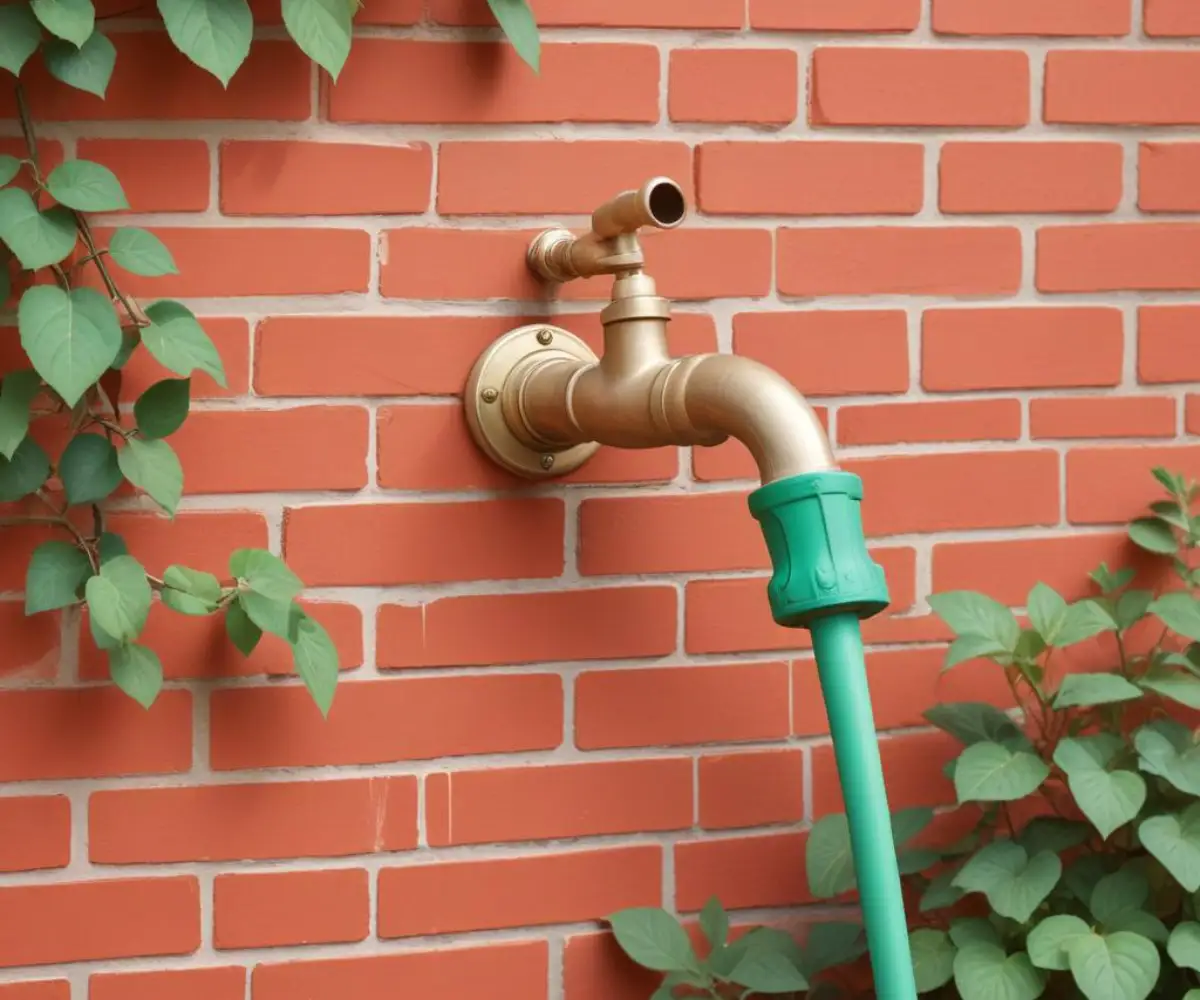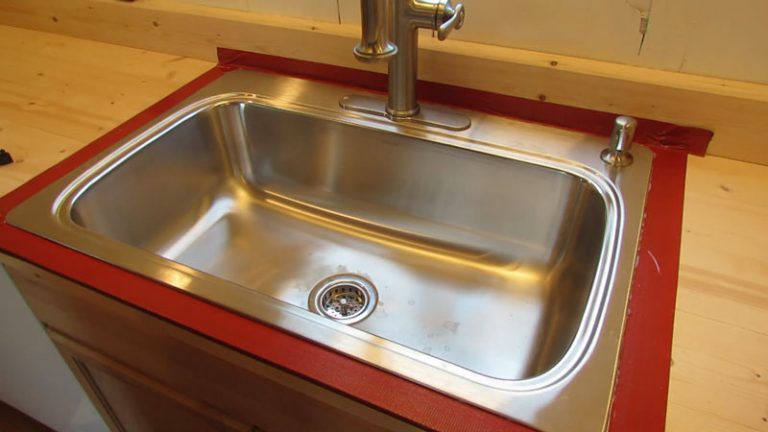Forgot to Turn Off Outside Water? This Costly Mistake Could Wreck Your Home
It’s a moment of sudden panic familiar to many homeowners. You’re settling in for the night or heading out for the day when a thought strikes you: “Did I turn off the water outside?” This seemingly small oversight can lead to a cascade of costly and destructive consequences, ranging from a shockingly high water bill to severe structural damage to your home’s foundation.
Forgetting to turn off an outside water spigot is more than just a minor slip-up; it’s a gamble with your property and your finances. Whether it’s a slow drip or a steady stream, unattended water flow can silently wreak havoc. Understanding the full scope of the potential damage is the first step toward preventing a small mistake from turning into a full-blown catastrophe.
You'll Learn About
The Silent Damage: What Really Happens When You Leave Outside Water On
The consequences of leaving an outdoor faucet running extend far beyond the initial shock of a massive water bill. While the financial hit from wasting hundreds or even thousands of gallons of water is significant, the more insidious damage occurs silently, often hidden from view until it becomes a major problem.
Prolonged water flow saturates the soil directly next to your home. This oversaturation can lead to significant soil erosion, washing away the ground that supports your house. As the soil becomes unstable, it can cause your foundation to shift, settle, or crack, compromising the structural integrity of your entire home. Signs of this can include new cracks in foundation walls or even water coming through floorboards in your basement or crawlspace.
The Domino Effect of Water Damage
Excess moisture creates an ideal breeding ground for mold and mildew, which can pose health risks and are costly to remediate. Furthermore, the standing water attracts pests like mosquitoes, termites, and ants, who are drawn to the damp environment. Before you know it, a simple forgotten faucet has led to foundational threats, mold growth, and a pest infestation.
The Winter Nightmare: When Forgetting Becomes a Catastrophe
While leaving the water on is problematic in any season, it becomes a true emergency in freezing temperatures. When you forget to turn off the outside water in winter—especially with a hose still attached—you are setting the stage for a burst pipe, one of the most destructive plumbing disasters a homeowner can face.
Water trapped in the faucet and the connecting pipe freezes and expands with incredible force. This expansion is often enough to split the copper pipe, not just at the spigot but inside the wall of your home. The devastating part is that you may not even realize the pipe has burst until the weather warms up, the ice thaws, and water begins pouring into your walls, basement, or crawlspace.
Immediate Action Plan: What to Do the Moment You Realize
The second you realize the water has been left on, it’s crucial to act fast to mitigate the damage. Follow these steps immediately, regardless of the season:
Step 1: Shut Off the Water at the Source. Immediately turn the handle on the outdoor spigot to stop the flow of water.
Step 2: Turn Off the Interior Shut-Off Valve. For a thorough shutdown, especially in winter, locate the shut-off valve inside your home that supplies the outdoor faucet. This is often in a basement, crawlspace, or utility room. Turning this valve off cuts the water supply completely.
Step 3: Disconnect Hoses and Attachments. Always disconnect your garden hose. This allows any remaining water in the spigot to drain out, which is absolutely essential in cold weather to prevent freezing and bursting.
Step 4: Inspect the Area. Check the ground around the faucet for signs of significant erosion or pooling water. Inside your home, inspect the area of the wall behind the faucet for any signs of moisture, discoloration, or softness in the drywall, which could indicate a leak.

Your Comprehensive Damage Control Checklist
After taking immediate action, you need to assess the situation more thoroughly. Check for signs of hidden damage that may have already occurred.
Look for new or expanding cracks in your foundation walls, both inside and out. Check for a musty smell or visible mold growth in the basement or crawlspace near the outdoor faucet. Also, be prepared for your next water bill and review it carefully to understand the full scope of the water loss.
Assessing the Potential Financial Impact
The cost of forgetting to turn off the water can vary dramatically. It could be a minor increase in your utility bill or escalate to thousands of dollars in repairs for a burst pipe and subsequent water damage restoration.
| Potential Problem | Estimated Cost Range | Key Factors |
|---|---|---|
| High Water Bill | $20 – $500+ | Duration of water flow and local utility rates. |
| Burst Pipe Repair | $150 – $5,000 | Pipe location, accessibility, and extent of the break. |
| Water Damage Restoration | $1,000 – $10,000+ | Area affected, materials damaged (drywall, flooring), and mold presence. |
| Foundation Repair | $5,000 – $25,000+ | Severity of cracks, settling, and the repair method required. |
Prevention is Key: How to Never Make This Mistake Again
The best way to deal with this problem is to ensure it never happens again. Implementing a few simple habits and affordable upgrades can provide peace of mind and protect your home.
Establish Seasonal Routines: Make winterizing your outdoor faucets a non-negotiable part of your fall checklist. This includes shutting off the interior valve and draining the line. In the spring, when you turn it back on, inspect everything for leaks.
Upgrade Your Hardware: Consider installing frost-proof sillcocks. These faucets are designed with a long stem that places the shut-off valve inside the heated part of your home, preventing the water inside from freezing. For added security, smart water timers can be attached to your spigot to automatically shut off the water after a set period.
Use Reminders: Sometimes the simplest solutions are the most effective. Place a brightly colored tag on the doorknob you use to go outside as a physical reminder to turn off the water. Alternatively, set a recurring reminder on your phone.
The Hidden Dangers of Pressurized Systems
A less-discussed but equally important issue is the constant pressure exerted on your plumbing system when a hose with a closed nozzle is left attached to an open spigot. This continuous pressure stresses the hose, fittings, and the faucet itself, leading to premature failure. This is not unlike the constant pressure that other appliances in your home must endure, highlighting the question, how fragile are water heaters and other pressurized systems?
Protect All Your Outdoor Water Connections
This principle of preventative maintenance extends beyond just your spigots. Any appliance connected to your outdoor water supply needs to be properly maintained and winterized. Learning how to protect outdoor washer and dryer units from the elements, especially freezing temperatures, can save you from costly repairs and water damage.
When to Call a Professional Plumber
While you can handle the immediate shut-off, some situations require professional expertise. Call a licensed plumber immediately if you see any signs of a leak inside your home, if you cannot locate or operate the interior shut-off valve, or if you turn the water back on in the spring and notice low pressure or visible dripping from the pipe.
A small mistake like forgetting to turn off the outside water can have enormous consequences. By understanding the risks, knowing the immediate steps to take, and implementing preventative strategies, you can protect your home from significant damage and ensure this simple oversight doesn’t turn into a financial and structural disaster.
Frequently Asked Questions
What happens if I forget to turn off my outside water in the winter?
Forgetting to turn off your outside water in winter can lead to frozen pipes. When water freezes, it expands, which can cause pipes to crack or burst, potentially leading to significant water damage to your home. Even if the pipes don’t burst, they can become blocked with ice, preventing water flow.
What should I do if I discover my outside faucet is frozen?
If your outside faucet is frozen, you should first shut off the water supply to that faucet from the inside of your house. You can then try to thaw the faucet using a hairdryer or a heat gun on a low setting. Once thawed, open the faucet to allow any remaining water to drain out.
How can I prevent my outside water pipes from freezing?
To prevent freezing, you should disconnect all hoses from your outside faucets before the first freeze. It is also crucial to locate and turn off the interior shut-off valve for each outdoor faucet and then open the outside spigot to drain any remaining water from the pipe. For extra protection, you can install foam faucet covers.
Is it a problem to leave my garden hose attached to the spigot?
Yes, leaving a garden hose attached can trap water in the faucet. If this water freezes, it can expand and cause the faucet or the connecting pipe to burst. It’s always best to disconnect, drain, and store your hoses before winter.
What if my home doesn’t have an interior shut-off valve for the outside faucet?
If your home lacks an interior shut-off valve, you should consider having one installed by a plumber for the best protection. Alternatively, you can use a frost-proof sillcock, which is designed to prevent freezing by shutting the water off inside the heated part of your home. Insulating the exterior faucet and the exposed pipe with foam covers or heat tape can also provide some protection.

